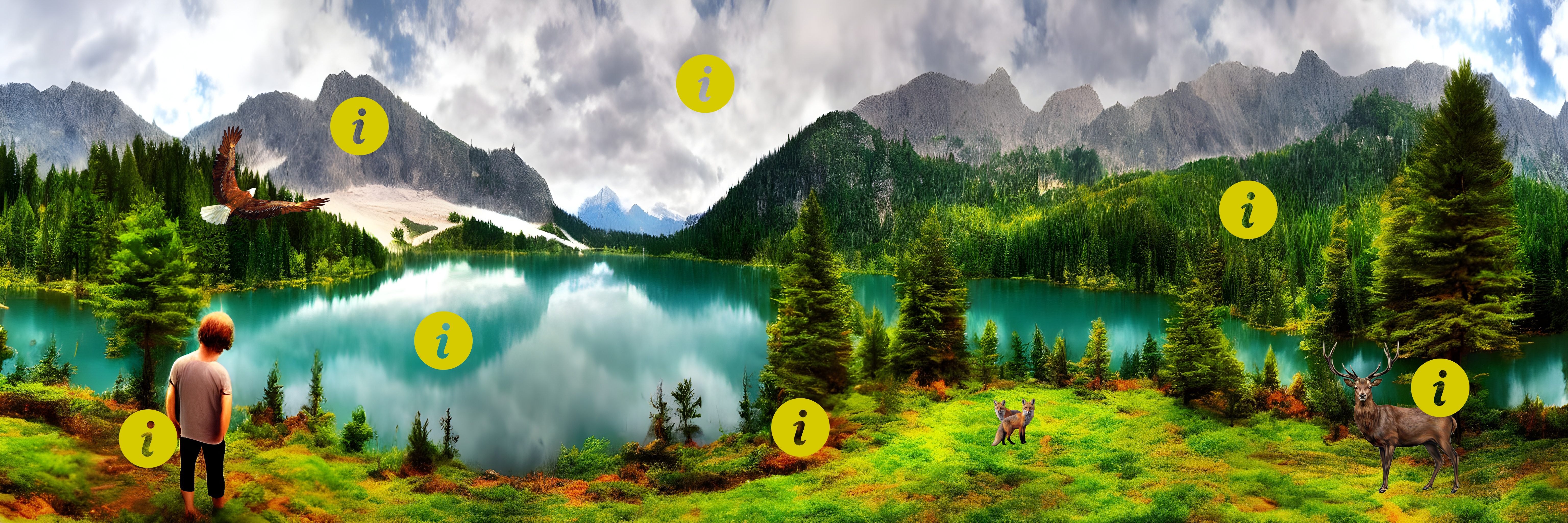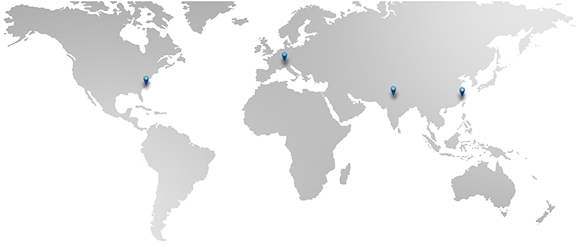Natural
ZINC FACTS
24th Most abundant resource on Earth.
%
2.5 Grams of zinc found in the average healthy person.
All life on earth is developed in the presence of zinc, and it is essential in 100% of living organisms.
Natural background levels of zinc vary depending on the location and geological conditions of the area.
An estimated 5.9 million metric tonnes of zinc cycles naturally through the environment each year.
ZINC IS NATURAL
Zinc is present in all natural systems and intimately tied to the natural world. It is one of the essential building blocks of what we call ‘The Environment’. Zinc has a role in the beauty of Mother Nature and fundamentally contributes to the biodiversity we see around us today. On a global scale, human activities do not meaningfully add to overall zinc loads to the environment – natural processes are more important. Explore the infographic below to learn more.

Humans
There are ~8 billion humans on Earth. An average of 2.5 g of zinc per person = 20 thousand tonnes of zinc in living human beings on Earth today.
Water
The natural levels of zinc in water can vary depending on the location and geological conditions of the area. Zinc concentrations in surface water and groundwater are typically low, ranging from less than one microgram per liter (μg/L) to several hundred μg/L. In areas where the geology is rich in zinc, such as areas with zinc ore deposits or volcanic rock formations, natural background levels of zinc in water can be significantly higher.
Lithosphere
Zinc is the 24th most abundant element in the Earth’s crust. It is estimated that every kilogram of the crust contains 70 mg of zinc - with a range of 10 to 3000 milligrams per kilogram (mg/kg). This zinc is released into the environment by weathering and erosion of rocks and minerals. Over time, zinc-containing minerals are broken down by natural processes, and the released zinc can enter soil, water, and air.
Soil
The natural background levels of zinc can vary depending on the location and geological conditions of the area. In general, the natural concentrations of zinc in soil range from 10 to 300 mg/kg. In places where the geology is rich in zinc, such as areas with zinc ore deposits or volcanic formations, natural background levels of zinc in the soil can be significantly higher.
Animals
All life on earth is developed in the presence of zinc, and it is essential in 100% of living organisms. Animals obtain zinc through their diet and from the water (if they have gills) with the uptake depending on the availability of zinc in their environment and their specific biological requirements. As zinc is an essential element, internal concentrations of zinc are tightly regulated by the organism.
Plants
Plants absorb zinc from the soil through their roots, where it plays many essential roles, including pollen development, stress tolerance, and photosynthesis. As zinc is an essential element, internal concentrations of zinc are tightly regulated. When plants die, their remains are broken down by decomposers like bacteria and fungi, releasing zinc back into the soil, where plants can take it up again.
Natural Cycling
The zinc cycle refers to the biogeochemical processes by which zinc is circulated through various compartments of the Earth, including the lithosphere (rocks and soil), hydrosphere (water), atmosphere (air), and biosphere (living organisms). It is estimated that these natural emissions of zinc amount to 5.9 million metric tonnes each year. The cycling of zinc is influenced by both natural processes and human activities.
NATURAL OCCURANCE
Zinc naturally occurs in the Earth's crust and various minerals, water, soil, and the atmosphere. It is the 24th most abundant element in the Earth's crust, with an average concentration of approximately 70 mg of zinc per kilogram of crust. Zinc is rarely found in its pure elemental form; instead, it is usually found as a component of minerals, such as sphalerite (zinc sulfide), smithsonite (zinc carbonate), hemimorphite (zinc silicate), and willemite (zinc silicate). Some of the natural sources of zinc include:
Minerals: Zinc is mainly extracted from ores like sphalerite (also known as zinc blende), which is the most significant source of zinc. Other minerals containing zinc include smithsonite, hemimorphite, and willemite.
Rocks: Zinc can be found in sedimentary rocks, igneous rocks, and metamorphic rocks. It is more commonly found in sedimentary rocks, especially those containing limestone, shale, and sandstone.
Soils: The zinc concentration in soils varies depending on factors such as the parent rock, weathering processes, and the presence of organic matter. Generally, zinc is more abundant in soils derived from rocks rich in zinc-bearing minerals.
Water: Zinc can be found in varying concentrations in both fresh and saltwater sources, including rivers, lakes, oceans, and groundwater. The presence of zinc in water may be due to natural processes, such as the weathering of rocks and minerals or human activities.
Air: Zinc is present in the atmosphere in trace amounts, primarily in the form of fine particles. These particles may originate from natural sources, such as volcanic eruptions and windblown dust, or from anthropogenic sources, like the combustion of fossil fuels, mining, and industrial processes.
Biota: Zinc is an essential element for all living organisms and can be found in plants, animals, and microorganisms. Plants typically obtain zinc from the soil through their roots, while animals obtain it through their diet. The zinc uptake by plants and animals varies depending on the availability of zinc in their environment and their specific biological requirements. As zinc is an essential element, internal concentrations of zinc are tightly regulated by the organism.
ZINC CYCLING THROUGH NATURE
The zinc cycle refers to the biogeochemical processes by which zinc circulates through various compartments of the Earth, including the lithosphere (rocks and soil), hydrosphere (water), atmosphere (air), and biosphere (living organisms). Both natural processes and human activities influence the cycling of zinc. The main processes involved in the zinc cycle include:
Weathering and erosion: The primary source of zinc in the environment is the weathering and erosion of rocks and minerals containing zinc. Over time, physical and chemical weathering processes break down these rocks and minerals, releasing zinc into the soil and water systems.
Leaching and deposition: Zinc in the soil can be dissolved in water and transported to rivers, lakes, and oceans through a process called leaching. The dissolved zinc may precipitate and accumulate in the sediment at the bottom of these water bodies. Over time, sedimentation can lead to the formation of sedimentary rocks, which may eventually become the source of zinc for future weathering and erosion processes.
Biological uptake and decomposition: Plants absorb zinc from the soil through their roots, which is then incorporated into their tissues. Animals, in turn, obtain zinc by consuming plants, other animals, or via their gills. As an essential trace element, zinc plays crucial roles in various biological processes in plants and animals. When plants and animals die, their remains decompose, whereby zinc is released back into the soil, where it can be taken up again by plants or leached into water systems.
Volcanic emissions and forest fires: Zinc can be released into the atmosphere through volcanic emissions and forest fires. Volcanic eruptions emit gases and ash containing various elements, including zinc. Similarly, forest fires can release zinc into the air in the form of fine particles. These particles can then be transported by wind and eventually deposited on the Earth's surface, contributing to the cycling of zinc.
Human activities: Human activities can alter the natural cycling of zinc, though these activities do not add to the overall zinc amount on a global scale.
Anthropogenic deposition: Zinc released into the atmosphere by human activities can be deposited back onto the Earth's surface through processes like wet deposition (rain or snow) and dry deposition (settling of particles). While the influence of natural zinc cycling processes on environmental zinc levels is much more important than the influence of human activity, at a local scale, anthropogenic emissions can, in some places, outweigh natural processes.
In summary, the zinc cycle is a complex process involving various natural and human-driven mechanisms that transfer zinc between different compartments of the Earth. This cycling of zinc is essential for maintaining the availability of zinc in the environment and ensuring its role in the proper functioning of ecosystems and living organisms.
ZINC: ESSENTIAL FOR LIFE
Biochemical processes: Zinc serves as a cofactor for numerous enzymes and proteins, which are crucial for metabolic processes such as DNA replication, protein synthesis, energy production, and the breakdown of carbohydrates, lipids, and proteins.
Structural stability: Zinc helps stabilize the structure of proteins, nucleic acids, and cell membranes, contributing to the overall stability of biomolecules and cellular integrity.
Gene expression: Zinc is involved in the regulation of gene expression through its role in transcription factors, where it forms part of zinc finger proteins that bind to specific DNA sequences, influencing the transcription of genes.
Immune system function: Zinc plays a vital role in the immune system of animals and humans, contributing to the development and function of immune cells, such as T cells and B cells, and regulating the production of cytokines and other immune-related proteins.
Growth and development: Zinc is necessary for growth and development in animals and humans, as it is involved in cell division, differentiation, and tissue repair. Inadequate zinc intake can result in growth retardation, impaired immune function, and other health problems.
Antioxidant properties: Zinc has antioxidant properties, protecting cells from oxidative stress and damage caused by reactive oxygen species (ROS). This helps to maintain the proper functioning of cells and reduce the risk of diseases associated with oxidative stress, such as cancer and neurodegenerative disorders.
Nutrient cycling: Zinc is an essential component of nutrient cycling in ecosystems, as it plays a role in the biological processes of plants, animals, and microorganisms that are responsible for recycling organic matter and maintaining soil fertility.
The importance of zinc in ecosystems underscores the need for maintaining adequate levels of this micronutrient in the environment and ensuring its availability for all living organisms.
